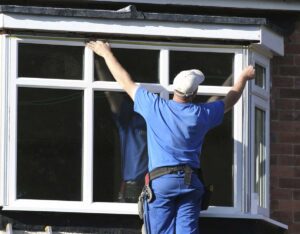
Modern Double Glazing Installation
Overview
-
Sectors Management
-
Posted Jobs 0
Company Description
Why We Why We Double Glazing Materials (And You Should Also!)
Understanding Double Glazing Materials: A Comprehensive Guide
Double glazing has actually ended up being a basic practice in contemporary construction and home remodelling, mainly due to its undeniable benefits in energy effectiveness, soundproofing, and overall comfort. At the core of this innovation lies an array of products, each contributing distinct advantages to the double glazing phenomenon. This article checks out the different materials used in double glazing, their residential or commercial properties, benefits and drawbacks, and how they impact the total efficiency of windows.
What is Double Glazing?
Double glazing is a type of insulation that includes 2 panes of glass separated by a space, typically filled with air or inert gas. This configuration serves a primary purpose: to decrease heat transfer between the exterior and interior of a structure. As a result, double-glazed windows assist maintain warmth throughout winter season and keep spaces cooler throughout summer season.
Advantages of Double Glazing
- Energy Efficiency: Minimizes heat loss, reducing energy bills.
- Sound Insulation: Reduces outdoors sound, enhancing convenience.
- Condensation Reduction: Lesser condensation suggests less danger of mold.
- Increased Security: Tougher than single-pane choices, using greater protection against break-ins.
- Boosted Property Value: Homes with Top Double Glazing Installation glazing are frequently more appealing to purchasers.
Common Double Glazing Materials
1. Glass Types
The efficiency of double glazing is mainly influenced by the type of glass utilized. Below are the typical types of glass utilized in double glazing:
| Glass Type | Description | Benefits | Downsides |
|---|---|---|---|
| Drift Glass | Standard glass, generally utilized in basic applications. | Economical | Less insulation compared to Low-E glass. |
| Low-Emissivity (Low-E) | Glass coated with a thin metal layer to reflect heat. | Outstanding insulation, preserves natural light. | Higher preliminary expense. |
| Tempered Glass | Heat-treated glass that is more powerful and much safer. | More durable, resistant to effect. | Can be more pricey due to processing. |
| Laminated Glass | Glass layers bonded with a plastic interlayer. | Offers security and UV defense. | Much heavier and more costly options. |
2. Spacer Bars
Spacer bars are the products that separate the two panes of glass in a double-glazed system. Different materials can be utilized for this function:
| Spacer Bar Material | Description | Advantages | Drawbacks |
|---|---|---|---|
| Aluminium | Lightweight and rigid but conductive. | Long lasting and economical. | Can result in condensation due to heat transfer. |
| PVC-U | A plastic alternative, less conductive compared to aluminum. | Excellent thermal efficiency. | Might not be as resilient as aluminum. |
| Warm Edge Technology | Often consists of a composite product. | Lowers thermal bridging, enhancing performance. | Typically more expensive. |
3. Gas Fills
The space between the panes of glass can be filled with air or particular gases to enhance insulation.
| Gas Type | Description | Advantages | Downsides |
|---|---|---|---|
| Air | Routine air without any special residential or commercial properties. | Cost-effective and enough for lots of applications. | Lower insulation than gas-filled systems. |
| Argon | Inert gas that is denser than air. | Exceptional thermal insulation. | More expensive than air however often warranted. |
| Krypton | Heavier and more efficient than argon. | Best insulation of the gas choices. | Much higher cost and needs specialized methods. |
Factors Influencing the Choice of Double Glazing Materials
When choosing materials for double glazing, numerous aspects ought to be thought about:

- Climate: The regional climate has a substantial effect on energy efficiency, determining the need for specific glass types or gas fills.
- Spending plan: Initial costs may exceed long-term benefits. Property owners need to stabilize upfront costs with possible cost savings.
- Visual Preference: Different frames and glass types provide a variety of visual designs that must complement the architecture of the home.
- Building Regulations: Local structure codes may dictate particular materials, demanding adherence to these guidelines.
Maintenance of Double Glazed Units
Beyond the installation of double glazing units, regular maintenance is essential for longevity and performance. Here are a few upkeep suggestions:
- Regular Cleaning: Use appropriate cleaners for both glass and frames to avoid buildup of dirt and grime.
- Examine Seals: Periodically examine window seals for damage or wear, as jeopardized seals can significantly lower insulation efficiency.
- Condensation Control: Monitor for condensation in between panes, which may suggest seal failure and demand repair work.
Often Asked Questions (FAQs)
Q: How long do double-glazed windows last?
A: Typically, double-glazed windows can last anywhere from 20 to 35 years, depending on the quality of materials and installation.
Q: Can I change just one pane of a double-glazed unit?
A: It is generally recommended to change the entire double-glazed system for ideal performance, as changing just one pane can cause mismatching insulation residential or commercial properties.

Q: Are double-glazed systems more costly than single glazing?
A: Yes, double-glazed units typically have a higher upfront expense due to advanced materials and building and construction, however they often pay for themselves through energy cost savings.
Q: Will double glazing lower sound pollution?
A: Yes, double-glazing efficiently decreases outside sound, making your living environment more serene.
Picking the best products for double glazing is a necessary action in improving energy effectiveness, sound insulation, and the overall convenience of a home. With numerous glass types, spacer bars, and gas fills offered in the market, understanding these elements can substantially affect efficiency. Homeowners should consider their unique requirements, choices, and local aspects to accomplish the best arise from their investment in double glazing technology. Following maintenance practices and staying informed about advancements in glazing products will ensure long-lasting gain from this practical and necessary feature of contemporary architecture.